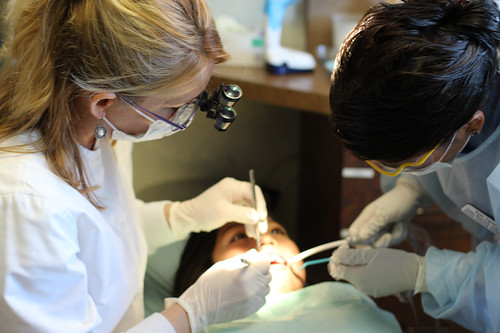Are Stainless Steel Crowns Safe for Children?
As a parent, it’s natural to have questions when your child’s dentist recommends a stainless steel crown—especially if it’s the first time you’ve heard of one. You might be wondering, “Why not just do a filling?” or “Is it really safe to put metal in a baby tooth?” These are valid concerns, and understanding the purpose and safety of stainless steel crowns can help you feel more confident in your child’s care.
In this post, we’ll break down why stainless steel crowns are commonly used in pediatric dentistry, when they’re recommended, and—most importantly—why they’re considered completely safe and effective for protecting your child’s teeth.
What Is a Stainless Steel Crown?
A stainless steel crown is a pre-formed metal cap that is placed over a tooth to restore its shape, strength, and function. It’s most often used on back baby teeth (molars) that have been damaged by large cavities or trauma, or after procedures like a pulpotomy (baby tooth nerve treatment). These crowns are made of medical-grade stainless steel, which is strong, biocompatible, and resistant to corrosion.
Unlike fillings, which only restore a portion of a tooth, a crown covers the entire surface—essentially acting like a protective helmet for the tooth. This is particularly useful in cases where a large part of the tooth structure has been lost and a filling wouldn’t hold up well under chewing forces.
Why Are Stainless Steel Crowns Used in Children?
Stainless steel crowns have become a trusted and widely used treatment option in pediatric dentistry for a reason—they offer a level of protection and durability that fillings simply can’t match, especially in growing children. While fillings may be appropriate for small areas of decay, when the damage is more extensive or the tooth structure is compromised, crowns are often the better long-term solution. Here’s why:
1. Exceptional durability for long-lasting protection
Baby molars are meant to stay in your child’s mouth for several years—often until around ages 10 to 12. During that time, they need to withstand daily chewing, grinding, and general wear and tear. Stainless steel crowns are incredibly strong and can handle these demands far better than composite fillings. Once placed, a crown typically stays in place and functions well until the baby tooth naturally falls out. This makes it an ideal option for restoring molars that have significant decay or structural damage.
2. Complete coverage to protect against future decay
Unlike fillings, which only restore the part of the tooth that’s been damaged, stainless steel crowns cover the entire tooth—from the chewing surface to the gumline. This full-coverage approach helps seal the tooth off from bacteria and food debris, dramatically lowering the risk of recurrent decay. It’s especially helpful for children who have deep grooves in their teeth, poor oral hygiene habits, or a history of multiple cavities.
3. Essential support after nerve treatment (pulpotomy)
If your child has undergone a pulpotomy—a procedure similar to a baby tooth root canal—then placing a crown afterward is almost always recommended. That’s because once the pulp (nerve tissue) has been treated, the tooth becomes more fragile and prone to breakage. The stainless steel crown reinforces the tooth’s strength, seals it tightly, and prevents reinfection, ensuring that it lasts until it’s naturally replaced by a permanent tooth.
4. Tolerant of moisture and movement during placement
One of the biggest challenges in treating young children is managing their natural tendency to wiggle, talk, or become anxious during dental procedures. Many filling materials require a dry and controlled environment to bond properly to the tooth. Stainless steel crowns, on the other hand, are more forgiving. They can be placed even when perfect dryness isn’t possible, which means fewer delays and a more successful outcome—especially for children who have difficulty sitting still for long.
5. Fewer failures and re-treatments
While fillings in baby teeth are effective in minor cases, they can break down or fall out over time—especially if the child chews hard foods, grinds their teeth, or doesn’t maintain good oral hygiene. Replacing lost fillings means more dental appointments, more discomfort, and potentially more cost. Stainless steel crowns are far more stable and reliable. Once placed, they rarely need repair and can remain intact until the tooth exfoliates naturally, saving you and your child from repeated trips to the dental chair.
Are Stainless Steel Crowns Safe?
Yes—stainless steel crowns have been safely used in pediatric dentistry for decades. The material is made from a combination of metals, including iron, chromium, and nickel, all of which are stable and considered biocompatible. The small amount of nickel used in the crown is well below safety thresholds and rarely causes reactions, even in children with minor sensitivities.
Numerous studies have confirmed that stainless steel crowns do not release harmful substances into the body. In fact, they are considered the gold standard for restoring damaged baby molars in a way that’s both functional and cost-effective.
That said, if your child has a known nickel allergy, it’s important to let the dentist know. In those rare cases, alternative materials—like zirconia (tooth-colored crowns)—can be considered.
Do stainless steel crowns affect how the smile looks?
Because stainless steel crowns are metallic, they are most often placed on baby molars near the back of the mouth—where they aren’t easily seen when your child talks or smiles. For front teeth or highly visible areas, your dentist may offer other options like tooth-colored crowns to maintain aesthetics.
Final Thoughts
While the idea of putting a metal crown on your child’s tooth may seem intimidating at first, stainless steel crowns are one of the most reliable and safest treatments in pediatric dentistry. They help save baby teeth that would otherwise be lost to decay or damage, allowing your child to chew comfortably, speak clearly, and maintain proper space for their permanent teeth.
If you have concerns about your child’s recommended treatment plan, don’t hesitate to ask questions. A good pediatric dental team will take the time to explain all your options and help you make the best decision for your child’s long-term oral health.






